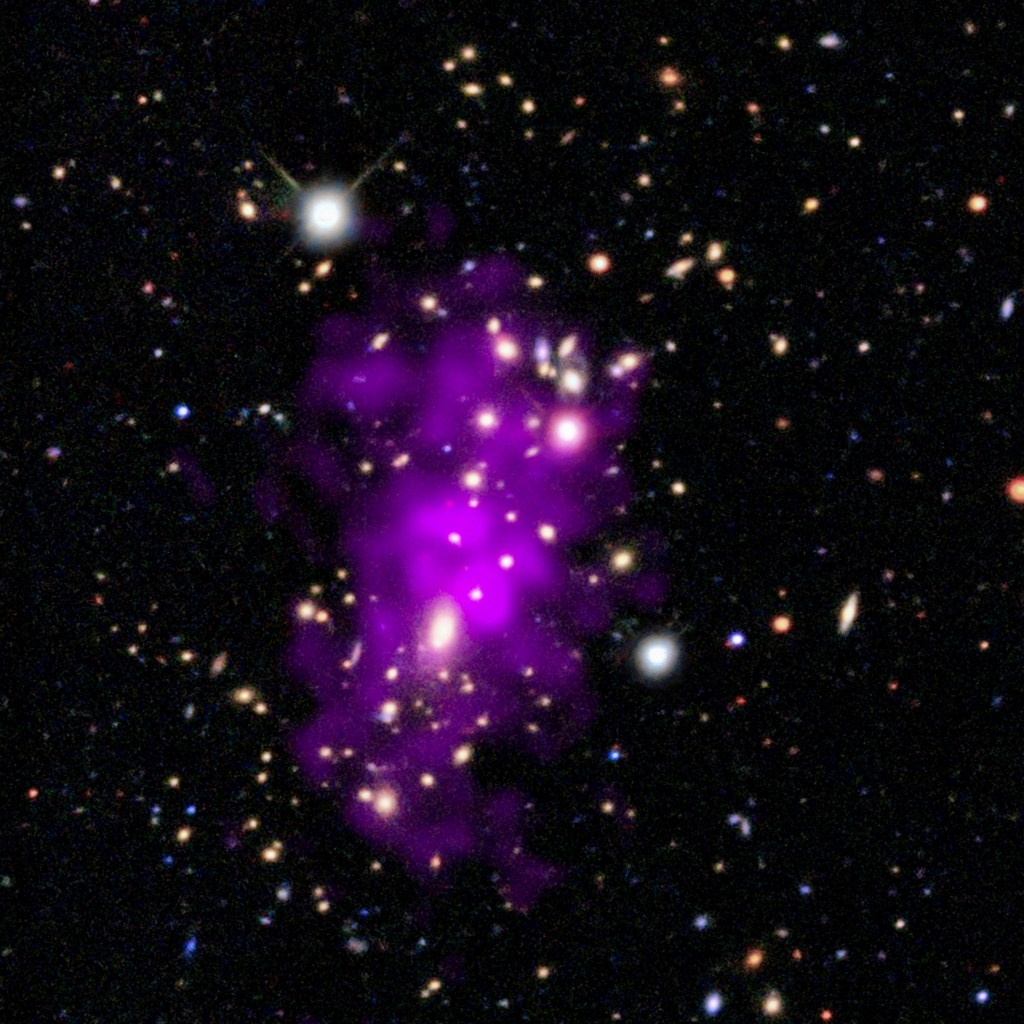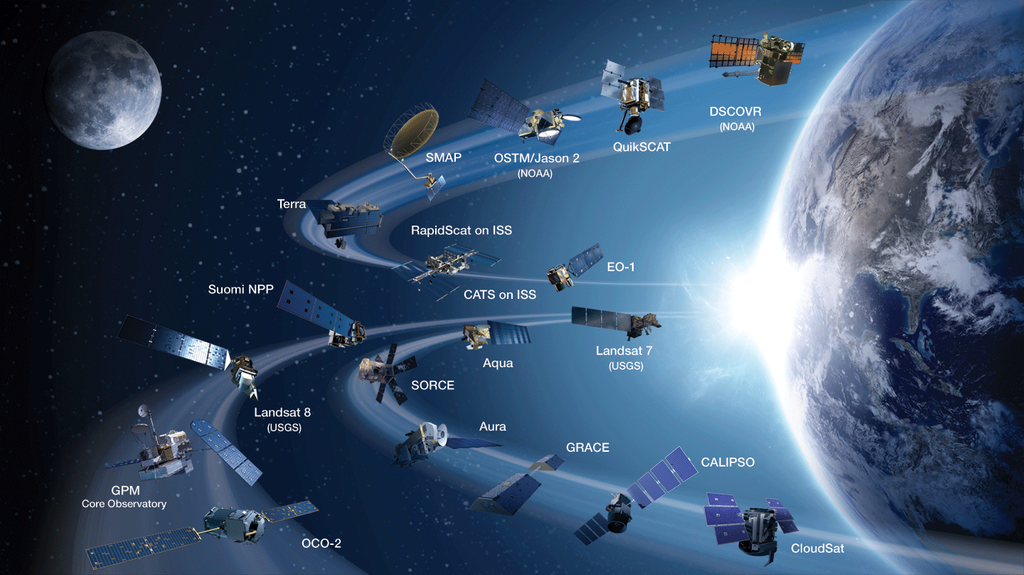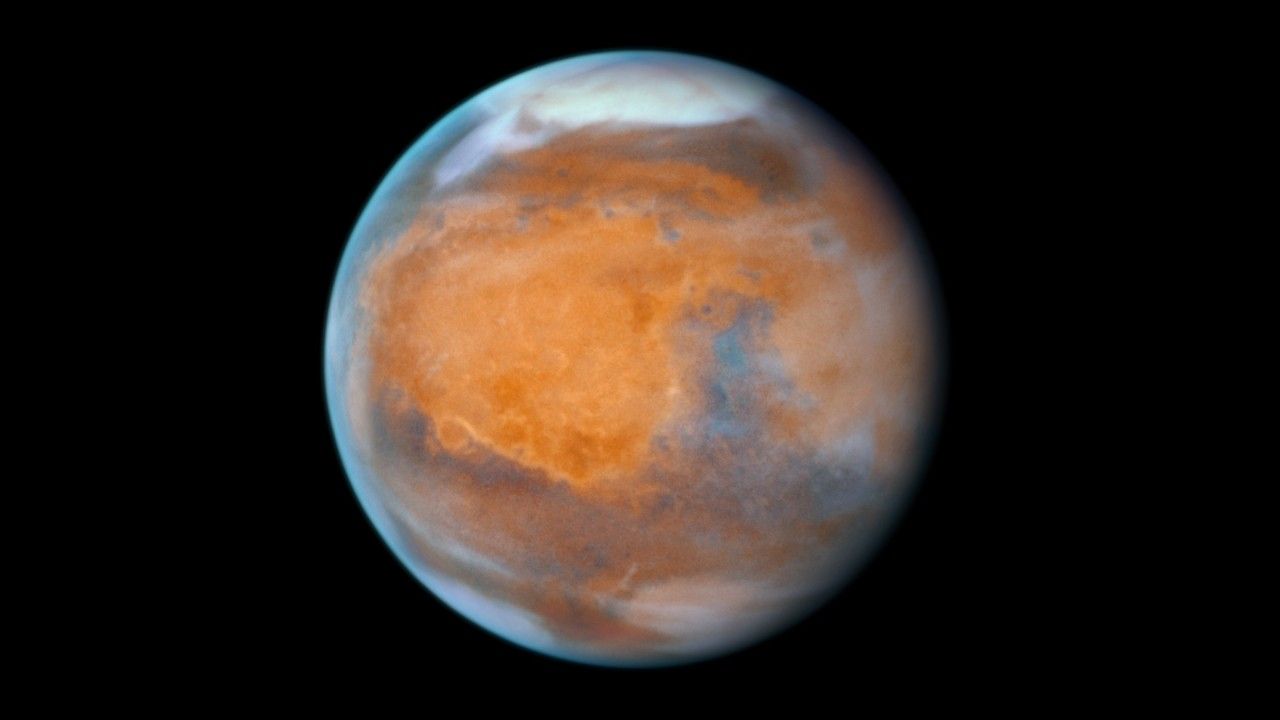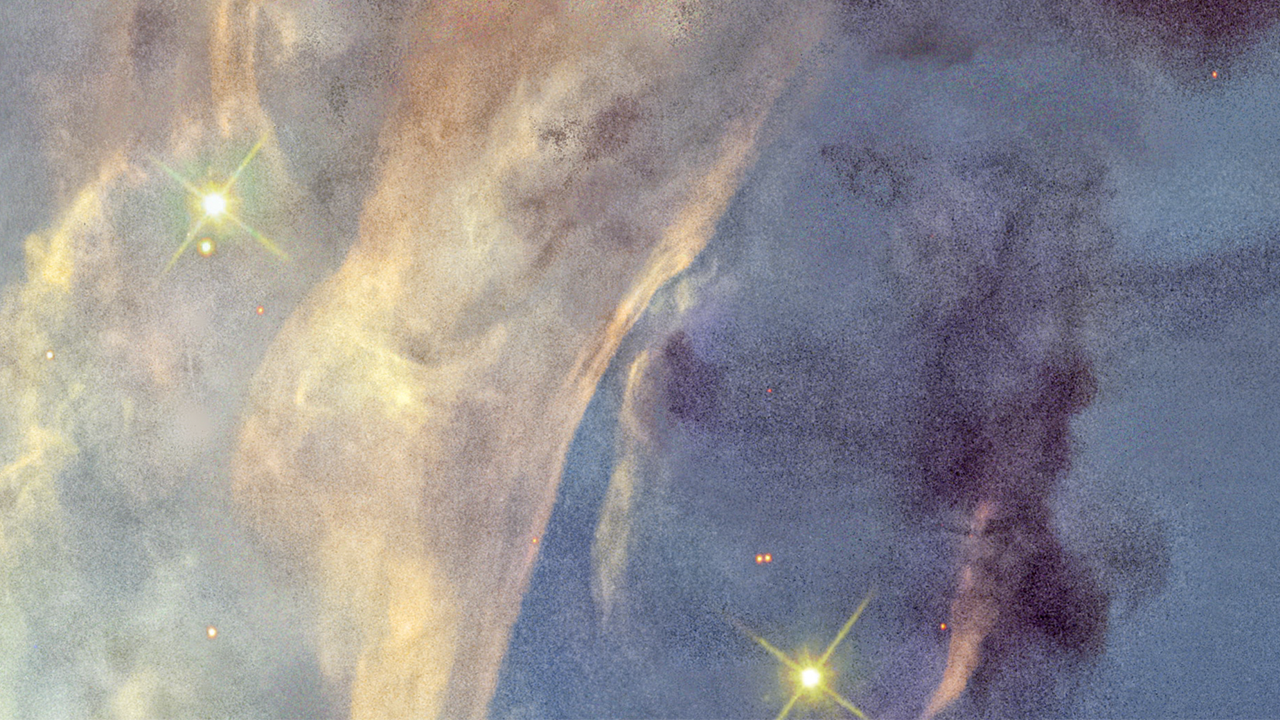1 min read
Rosette Nebula Context Image

The Rosette Nebula is a vast star-forming region, 100 light-years across, that lies at one end of a giant molecular cloud in the constellation Monoceros. The nebula is estimated to contain around 10,000 solar masses. The nebula is located about 5,000 light-years away from Earth. Intense radiation from the young stars inside a cluster in the nebula causes the gasses to glow. The background image is from the Digitized Sky Survey, while the inset is a small portion of the nebula as photographed by the Hubble Space Telescope. Dark clouds of hydrogen gas laced with dust are silhouetted across the image. The colors come from the presence of hydrogen, oxygen, and nitrogen. Explore the nebula's multiwavelength appearance on Viewspace.org.
About the Object
- R.A. PositionR.A. PositionRight ascension – analogous to longitude – is one component of an object's position.06:33:45
- Dec. PositionDec. PositionDeclination – analogous to latitude – is one component of an object's position.+04:59:54
- ConstellationConstellationOne of 88 recognized regions of the celestial sphere in which the object appears.Monoceros
- DistanceDistanceThe physical distance from Earth to the astronomical object. Distances within our solar system are usually measured in Astronomical Units (AU). Distances between stars are usually measured in light-years. Interstellar distances can also be measured in parsecs.5,200 light-years
- Object NameObject NameA name or catalog number that astronomers use to identify an astronomical object.Rosette Nebula
- Object DescriptionObject DescriptionThe type of astronomical object.Nebula
- Release DateApril 23, 2025
- Science ReleaseEye on Infinity: NASA Celebrates Hubble’s 35th Year in Orbit
- CreditNASA, ESA, STScI, DSS; Image Processing: Joseph DePasquale (STScI)
Downloads
Related Images & Videos

Mosaic of Hubble 35th Anniversary Targets
A selection of photogenic space targets to celebrate the 35th anniversary of NASA's Hubble Space Telescope. Upper left: Mars. Upper right: planetary nebula NGC 2899. Lower left: a small portion of the Rosette Nebula. Lower right: barred spiral galaxy NGC 5335.

Planetary Nebula NGC 2899
This video zooms across 6,500 light-years through a star-studding field to visit the planetary nebula NGC 2899, as photographed by the Hubble Space Telescope. The nebula has a diagonal bipolar structure formed by a cylindrical-shaped outflow of hot gasses and radiation from the c...
Share
Details
Claire Andreoli
NASA’s Goddard Space Flight Center
Greenbelt, Maryland
claire.andreoli@nasa.gov








































